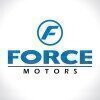Filter interviews by
Ola Electric Mobility Diagnosis Engineer Interview Questions, Process, and Tips
Ola Electric Mobility Diagnosis Engineer Interview Experiences
3 interviews found
Basic Logical & Reasoning based questions
(5 Questions)
- Q1. What is BMS, what are the basic components of a BMS.
- Ans.
BMS stands for Battery Management System. It is a system that manages and monitors the performance of a battery.
Basic components of a BMS include battery monitoring unit, battery control unit, and battery charger.
Battery monitoring unit measures voltage, current, temperature, and state of charge of the battery.
Battery control unit manages the charging and discharging of the battery to optimize performance.
Battery charg...
- Q2. What is MCU & Motor, basic structure of MCU & Motor
- Ans.
MCU stands for Microcontroller Unit and Motor is a device that converts electrical energy into mechanical energy.
MCU is a small computer on a single integrated circuit used to control other devices.
Motor is a machine that converts electrical energy into mechanical energy.
Basic structure of MCU includes CPU, memory, input/output ports, timers, etc.
Basic structure of Motor includes stator, rotor, bearings, and shaft.
Exam...
- Q3. What do you understand by Contol Panel
- Ans.
A control panel is a device or interface used to control and monitor various systems or equipment.
A control panel typically consists of buttons, switches, dials, and indicators for user interaction.
It is commonly used in industrial settings to control machinery or processes.
Control panels can also be found in consumer electronics, such as microwave ovens or washing machines.
They are often designed to be user-friendly a
- Q4. Difference between LFP & NMC
- Ans.
LFP is Lithium Iron Phosphate and NMC is Lithium Nickel Manganese Cobalt Oxide. Both are types of lithium-ion battery chemistries.
LFP (Lithium Iron Phosphate) is known for its high thermal and chemical stability, making it safer than other lithium-ion chemistries.
NMC (Lithium Nickel Manganese Cobalt Oxide) offers higher energy density and longer lifespan compared to LFP.
NMC batteries are commonly used in electric vehic...
- Q5. What is thermistor, diode, what's the difference between unidirectional & bi directional elements.
- Ans.
A thermistor is a type of resistor whose resistance changes significantly with temperature, while a diode is a semiconductor device that allows current to flow in one direction only.
Thermistor: resistor with temperature-dependent resistance (ex. NTC thermistor)
Diode: semiconductor device allowing current flow in one direction (ex. silicon diode)
Unidirectional element: allows current flow in one direction only (ex. diod...
Skills evaluated in this interview

(1 Question)
- Q1. Basic general information candidate
(1 Question)
- Q1. Work related how to find fault in scooters.
Interview Preparation Tips
I applied via Campus Placement and was interviewed in Sep 2023. There were 3 interview rounds.

Reasoning Aptitude Time Study Relationship Maths
(2 Questions)
- Q1. What do you know about Electric Vehicle?
- Ans.
Electric vehicles are vehicles that run on electric motors powered by rechargeable batteries, reducing reliance on fossil fuels.
Electric vehicles produce zero tailpipe emissions, reducing air pollution and greenhouse gas emissions.
They are more energy efficient than traditional internal combustion engine vehicles.
Examples of electric vehicles include Tesla Model S, Nissan Leaf, and Chevrolet Bolt.
Charging infrastructur...
- Q2. What do you know about Motor ?
- Ans.
A motor is a device that converts electrical energy into mechanical energy to produce motion.
Motors can be classified into different types such as AC motors and DC motors.
Common examples of motors include electric motors used in household appliances, industrial machinery, and vehicles.
Motors operate based on the principles of electromagnetism, where the interaction between magnetic fields generates motion.
Efficiency, p...
Interview Preparation Tips
Interview questions from similar companies

I applied via Campus Placement and was interviewed before Oct 2021. There were 3 interview rounds.

General Aptitude test , Reasoning
(2 Questions)
- Q1. Technical test with Mechanical background
- Q2. Projects done during academic
- Ans.
During my academic years, I completed several projects related to marketing and business management.
Developed a marketing plan for a local restaurant as part of a marketing course
Conducted a market research project on consumer behavior for a business management course
Created a business plan for a startup as part of an entrepreneurship course
Collaborated with a team to develop a social media strategy for a nonprofit org
Interview Preparation Tips
Revisit basic technical fundamentals

I applied via Naukri.com and was interviewed before Jul 2021. There was 1 interview round.
(4 Questions)
- Q1. Introduce yourself from your education background to your current position
- Q2. Why you want to left this job?
- Q3. What is you weakness and strength
- Q4. Explain one of your project in detail
Interview Preparation Tips

I applied via LinkedIn and was interviewed in Mar 2024. There were 2 interview rounds.
(2 Questions)
- Q1. About previous organization working culture
- Q2. What are the roles and responsibilities handled?
- Ans.
Assistant Managers handle various roles and responsibilities including overseeing daily operations, managing staff, and ensuring customer satisfaction.
Overseeing daily operations to ensure smooth functioning of the business
Managing and supervising staff members to ensure productivity and efficiency
Handling customer complaints and ensuring high levels of customer satisfaction
Assisting the Manager in decision-making and ...
(1 Question)
- Q1. What are the salary expectations?
- Ans.
Salary expectations are negotiable based on the responsibilities and benefits offered.
Research industry standards for similar positions
Consider cost of living in the area
Factor in benefits such as healthcare, retirement plans, and bonuses
Be prepared to discuss salary range rather than a specific number

I applied via Naukri.com and was interviewed in Dec 2021. There were 5 interview rounds.

(2 Questions)
- Q1. Questions related to job profile that they mentioned.
- Q2. Questions related to Key skill that i mentioned in my resume
(2 Questions)
- Q1. Technical skill that i mentioned in my resume
- Q2. Are you ok to work with us
- Ans.
Yes, I am okay to work with you.
I am excited about the opportunity to work with your team.
I have experience working in a team environment and enjoy collaborating with others.
I am adaptable and can easily adjust to new work environments and team dynamics.
I am a good communicator and can effectively work with different personalities and backgrounds.
I am committed to the success of the team and will contribute my best eff
(4 Questions)
- Q1. Why we hire you as you have not so much work experience
- Ans.
I may not have extensive work experience, but I possess the necessary skills, qualifications, and potential to excel in the role of Assistant Manager.
Highlight relevant skills and qualifications
Emphasize potential and willingness to learn
Provide examples of transferable skills or achievements
Demonstrate enthusiasm and passion for the role
- Q2. Why you want to change your job
- Ans.
I am seeking new challenges and opportunities for growth in my career.
Looking for a more challenging role
Seeking opportunities for career advancement
Want to broaden my skill set
Desire to work in a different industry
Seeking a better work-life balance
- Q3. Are you ok to work for us
- Ans.
Yes, I am okay to work for you.
I am highly motivated and dedicated to my work.
I have previous experience in a similar role.
I am a team player and can work well with others.
I am flexible and adaptable to changing work environments.
I am committed to achieving the company's goals and objectives.
- Q4. Family background of your
- Ans.
I come from a close-knit family with a diverse background.
My parents are both educators, and they instilled in me a love for learning and teaching.
I have two siblings, one older and one younger, who have always been supportive and encouraging.
My family values hard work, integrity, and compassion, which have shaped my own values and work ethic.
We often gather for family dinners and celebrate special occasions together, ...
(2 Questions)
- Q1. Your understanding about business ethics, code of conduct
- Ans.
Business ethics refers to the moral principles and values that guide the behavior and decision-making of individuals and organizations in the business world.
Business ethics involves conducting business in a fair and honest manner.
It includes following laws and regulations, as well as adhering to ethical standards.
Businesses should prioritize the well-being of stakeholders, including employees, customers, and the commun...
- Q2. Want to your team player atitude, People management skill, your projects.
Interview Preparation Tips

I applied via Naukri.com and was interviewed before Aug 2023. There were 2 interview rounds.
(2 Questions)
- Q1. Question On company Requirement.
- Q2. All about on yourself and education
(2 Questions)
- Q1. All questions related your resume
- Q2. Some technical and some manpower handling and any incident face with union.
Interview Preparation Tips

I applied via Naukri.com
(1 Question)
- Q1. Details technical questions related to your field
(1 Question)
- Q1. About your personality
(1 Question)
- Q1. About your goals, short term as well as long term goal
Interview Preparation Tips

I appeared for an interview in Sep 2024, where I was asked the following questions.
- Q1. Costing formula
- Q2. What is strategic sourcing?
- Ans.
Strategic sourcing is a systematic approach to procurement that optimizes supplier selection and management for long-term value.
Focuses on long-term supplier relationships rather than short-term transactions.
Involves analyzing the total cost of ownership, not just purchase price. For example, considering shipping, storage, and maintenance costs.
Utilizes data analytics to assess supplier performance and market trends.
En...
- Q3. What is CSL and how can your prepare
- Q4. What is BOM & Routing verification
Ola Electric Mobility Interview FAQs
Some of the top questions asked at the Ola Electric Mobility Diagnosis Engineer interview -
Tell us how to improve this page.
Ola Electric Mobility Interviews By Designations
- Ola Electric Mobility Brand Champion Interview Questions
- Ola Electric Mobility Assistant Manager Interview Questions
- Ola Electric Mobility Service Engineer Interview Questions
- Ola Electric Mobility Graduate Engineer Trainee (Get) Interview Questions
- Ola Electric Mobility Store Manager Interview Questions
- Ola Electric Mobility Mechanical Technician Interview Questions
- Ola Electric Mobility Manager Interview Questions
- Ola Electric Mobility Data Analyst Interview Questions
- Show more
Interview Questions for Popular Designations
- Diagnostic Specialist Interview Questions
- Diagnostic Engineer Interview Questions
- Diagnostic Technician Interview Questions
- Dialysis Technician Interview Questions
- Senior Dialysis Technician Interview Questions
- Dialysis Technologist Interview Questions
- Jr Dialysis Technician Interview Questions
- Dialysis Technician Trainee Interview Questions
- Show more
Ola Electric Mobility Diagnosis Engineer Interview Process
based on 3 interviews
Interview experience
Interview Questions from Similar Companies
Fast track your campus placements
Ola Electric Mobility Diagnosis Engineer Reviews and Ratings
based on 6 reviews
Rating in categories
|
Assistant Manager
541
salaries
| ₹5 L/yr - ₹20.5 L/yr |
|
Manager
304
salaries
| ₹8.3 L/yr - ₹31 L/yr |
|
Store Manager
193
salaries
| ₹2.5 L/yr - ₹6.5 L/yr |
|
Senior Manager
189
salaries
| ₹17 L/yr - ₹45 L/yr |
|
Senior Associate
184
salaries
| ₹2.4 L/yr - ₹10 L/yr |

Escorts Kubota Limited

Sonalika Tractors

Force Motors

Yamaha Motor
- Home >
- Interviews >
- Ola Electric Mobility Interview Questions >
- Ola Electric Mobility Diagnosis Engineer Interview Questions

























